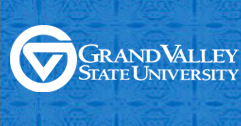The Generational Digital Divide: Understanding Adult Learners' Self-efficacy in Online Education
Location
Hager-Lubbers Exhibition Hall
Description
BACKGROUND: Higher education is seeing a substantial rise in both the number of adult learners who are returning to college as well as the number of online and blended courses being offered by institutions. Adult learners are returning to higher education and frequently finding themselves in an e-learning environment, which may not have existed during their first stint in college. Online and blended classes often require students to complete technology tasks that they may not be confident performing. METHODS: Descriptive statistics were used to determine those tasks commonly used in online courses that adult learners are least confident performing. Additionally, a two-way ANOVA was used to analyze and compare adult learners’ confidence levels with technology tasks used in online courses to the confidence levels of traditionally aged students. RESULTS: Adult learners were most confident performing the most common basic computing and learning management system (LMS) tasks such as formatting documents, transferring files and turning in assignments using the LMS. ANOVA found that adult learners had significant gains in confidence with the technology commonly found in online and blended instruction after taking an online or blended course. IMPLICATIONS: These results could improve adult learners’ confidence with the technology used in an e-learning environment.
The Generational Digital Divide: Understanding Adult Learners' Self-efficacy in Online Education
Hager-Lubbers Exhibition Hall
BACKGROUND: Higher education is seeing a substantial rise in both the number of adult learners who are returning to college as well as the number of online and blended courses being offered by institutions. Adult learners are returning to higher education and frequently finding themselves in an e-learning environment, which may not have existed during their first stint in college. Online and blended classes often require students to complete technology tasks that they may not be confident performing. METHODS: Descriptive statistics were used to determine those tasks commonly used in online courses that adult learners are least confident performing. Additionally, a two-way ANOVA was used to analyze and compare adult learners’ confidence levels with technology tasks used in online courses to the confidence levels of traditionally aged students. RESULTS: Adult learners were most confident performing the most common basic computing and learning management system (LMS) tasks such as formatting documents, transferring files and turning in assignments using the LMS. ANOVA found that adult learners had significant gains in confidence with the technology commonly found in online and blended instruction after taking an online or blended course. IMPLICATIONS: These results could improve adult learners’ confidence with the technology used in an e-learning environment.
